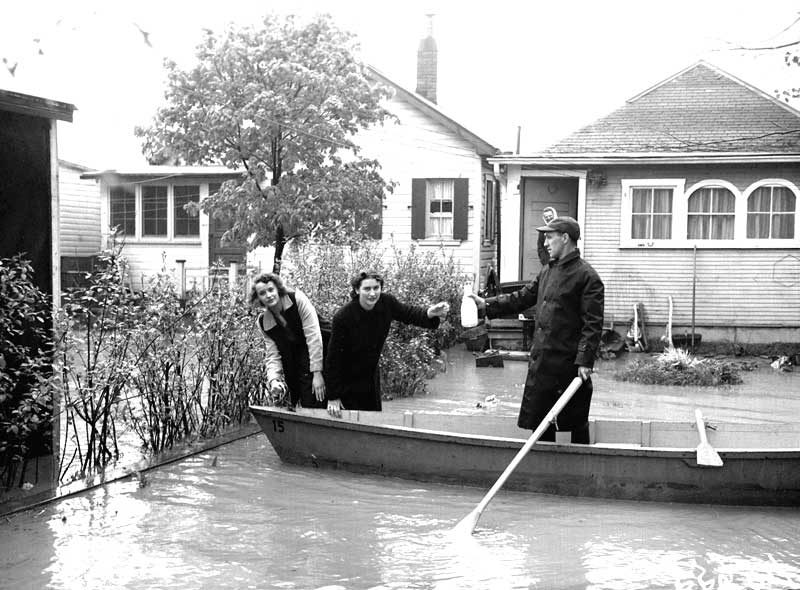|
Jean-Bonaventure Rousseau
Jean-Bonaventure Rousseau was an influential fur trader in New France, and, after its capture by Great Britain, the Province of Canada. His father who also went by the given name Jean, had been a fur trader in the Ohio River valley. His son Jean Baptiste Rousseau started as a fur trader before becoming one of the most important merchants in Upper Canada. In the 1750s, French authorities destroyed some fortifications, including the Magasin Royal, Fort Toronto and Fort Rouillé during the Seven Years' War. Rousseau restored Fort Toronto, near the mouth of the Humber, to serve as a fur trading post, and delegated its operation to his son. After the British conquest of New France, Rousseau swore a loyalty oath and worked for the British as an interpreter, circa 1770. He subsequently received a license to trade fur around the Toronto area ''“and from thence to any markets or parts which he should find advantageous for the sale of his merchandise"''. This included the trade along ... [...More Info...] [...Related Items...] OR: [Wikipedia] [Google] [Baidu] |
Jean Baptiste Rousseau (fur Trader)
Jean Baptiste Rousseau was a fur trader, merchant, government official, and officer in the British Indian Department in Upper Canada. Jean Baptiste Rousseau was born in Montreal, New France. His father, Jean-Bonaventure Rousseau, was a fur trader, operating out of the area around Lake Ontario. Through his own work in the fur trade, Rousseau learned the languages of the local First Nations. In 1770 Rousseau's father was licensed to trade fur at the mouth of what is now known as the Humber River, a stopping place for First Nations people travelling from Lake Ontario to the upper lakes. Rousseau had strong ties with Joseph Brant, the influential Mohawk leader who had fought with the British during the American Revolution. His second wife, Margaret Clyne, was Brant's adopted daughter. Rousseau and his wife named one of their sons Joseph Brant. Rousseau would later purchase 12,000 acres of Mohawk land through Brant. John Graves Simcoe, the first Lieutenant Governor of Upper ... [...More Info...] [...Related Items...] OR: [Wikipedia] [Google] [Baidu] |
Humber River (Ontario)
The Humber River ( oj, Gabekanaang-ziibi, p=Gabekanaang-ziibi, ''meaning: "little thundering waters"'') is a river in Southern Ontario, Canada. It is in the Great Lakes Basin, is a tributary of Lake Ontario and is one of two major rivers on either side of the city of Toronto, the other being the Don River to the east. It was designated a Canadian Heritage River on September 24, 1999. The Humber collects from about 750 creeks and tributaries in a fan-shaped area north of Toronto that encompasses portions of Dufferin County, the Regional Municipality of Peel, Simcoe County, and the Regional Municipality of York. The main branch runs for about from the Niagara Escarpment in the northwest, while another major branch, known as the East Humber River, starts at Lake St. George in the Oak Ridges Moraine near Aurora to the northeast. They join north of Toronto and then flow in a generally southeasterly direction into Lake Ontario at what was once the far western portions of the city. Show ... [...More Info...] [...Related Items...] OR: [Wikipedia] [Google] [Baidu] |
Ontario Department Of Planning And Development
Ontario ( ; ) is one of the thirteen provinces and territories of Canada.Ontario is located in the geographic eastern half of Canada, but it has historically and politically been considered to be part of Central Canada. Located in Central Canada, it is Canada's most populous province, with 38.3 percent of the country's population, and is the second-largest province by total area (after Quebec). Ontario is Canada's fourth-largest jurisdiction in total area when the territories of the Northwest Territories and Nunavut are included. It is home to the nation's capital city, Ottawa, and the nation's most populous city, Toronto, which is Ontario's provincial capital. Ontario is bordered by the province of Manitoba to the west, Hudson Bay and James Bay to the north, and Quebec to the east and northeast, and to the south by the U.S. states of (from west to east) Minnesota, Michigan, Ohio, Pennsylvania, and New York. Almost all of Ontario's border with the United States follows ... [...More Info...] [...Related Items...] OR: [Wikipedia] [Google] [Baidu] |
